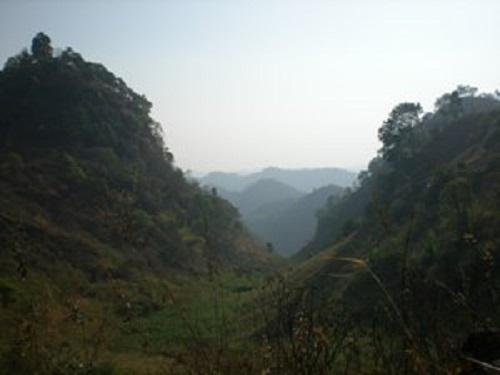Nang Kham Lay
This project has two main aims:
-To protect and conserve the pangolins in their natural environment with cooperation of local communities.
-To encourage the local people to keep pangolin wherever feasible.

Pangolin's habitats.
The Pangolin is a mammal belonging to the Pholidota order, Manidae family and Manis genus and it's surely one of the strangest animals of the world. The name Pangolin is derived from Malayan phrase " Pen Gulling / Peng-goling " meaning " rolling ball / one who curls up." There are seven species of pangolins, three in the Asia and four in the Africa. Here, Asian pangolin are classified as Lower Risk/ near threatened (LR/nt) on the IUCN Red List of Threatened Species, and listed on Appendix II of CITES, whose existence in the wild is under serious threat due to their popularity in the illegal wildlife trade.
./0e1b837021d080eae9cbaee87ef6edb2.jpg)
Pangolin's scale (dorsal view).
Nowadays, in the project site, hunting, illegal trading, habitat destruction, random use of pesticides, and traditional medicine practices have made these mammals to become one of the most endangered groups in the world. In fact, pangolin has been hunted by local people for its skin for leather, its scales for traditional medicine and jewellery, and body for meat for hundreds of years. In fact, the implementations of pangolin conservation activities or conservation education are linked with the maintenance of ecological stability and productivity. Moreover, pangolin play in saving the economic damage caused by termites and ants to agricultural crops and household properties. Therefore, the conservation or restoration of natural pangolin habitats would not only serve the whole pangolin population but also other fauna and flora resources.
Finally, active conservation and protection of the free-living wild pangolin, whose welfare is compromised by receive humans, are needed for our generation as well as ecosystem balance. To obtain the project's aims and conserve the pangolin, the following strategies will implement within project period (twelve months).
Strategy I . Data Collection and Processing.
- Field trips.
- Field interview including traders, hunters, traditional medicine practitioner, retailers of wildlife and so on.
- Field investigations including the rural markets. And then, analysis data and prepare for public extension materials.
Strategy II . Public Extension
A. Routes of public extension. Loud-speaker announcement, community level meeting, setting hoarding boards and posters, exhibitions, video showing, distribution of handouts, calendars, T-shirts, caps, stickers and so on.
B. Development of special programs for humans and pangolins co-exist.
- School Level Awareness Program,
- Pangolin Conservation Team Program,
- Human population growth Control Program.
These programs will be assured for the long term survival of pangolins.
C. Instillation the knowledge about pangolins' welfare and nature conservation laws among the local communities. Team members will conduct the above activities as public extension procedures.
Strategy III . Knowledge-Transfer to Improve the Livelihood Standards and Habitats Condition.
Knowledge about regional economy status, animal husbandry methodologies, sustainable agricultural development, handicraft, and other sources for extra and alternative income generation and so on will be transferred. And then, establishment of teaching centres, mini-libraries and continue the above strategies whenever feasible.